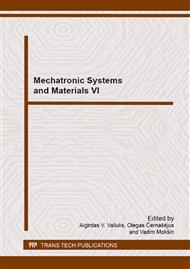p.491
p.497
p.504
p.510
p.515
p.520
p.526
p.532
p.538
Tensile Stress Sensor with Amorphous Ring Shape Core
Abstract:
The paper presents the possibility of using amorphous materials as cores of tensile stress sensors. Application of thermal annealing of the core to increase magnetoelastic sensitivity is presented. Important parts of measuring system are the signal processing circuit of the sensor and the sensor control system. The results of measurements of the characteristics of the sensors with signal processing circuit are presented.
Info:
Periodical:
Pages:
515-519
Citation:
Online since:
January 2015
Authors:
Price:
Сopyright:
© 2015 Trans Tech Publications Ltd. All Rights Reserved
Share:
Citation:


